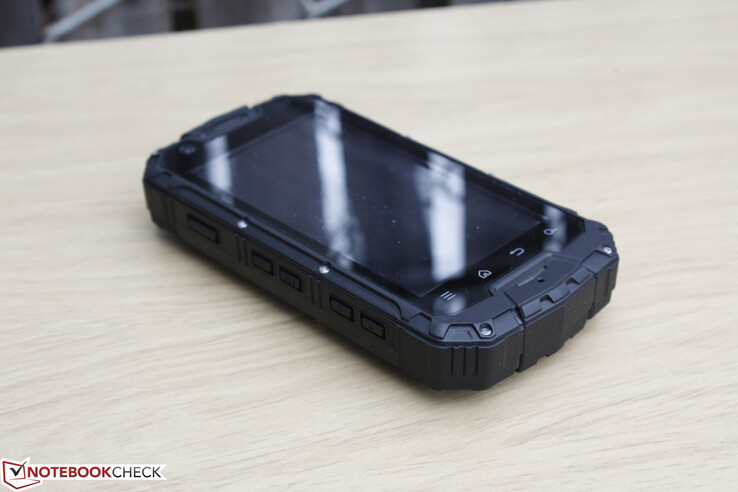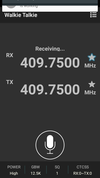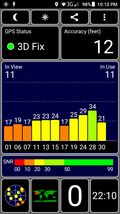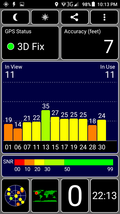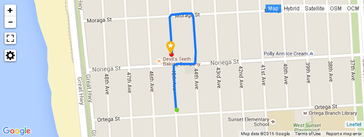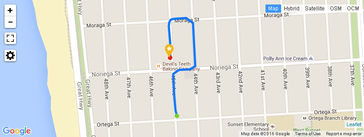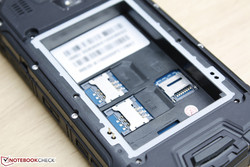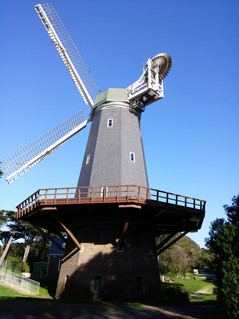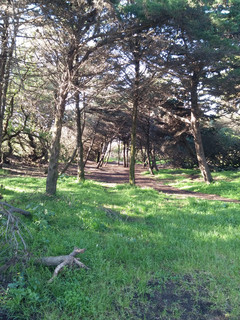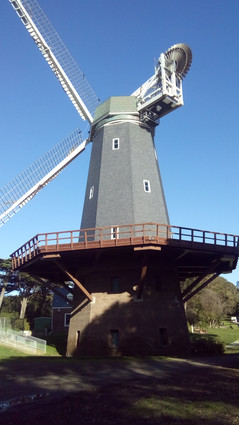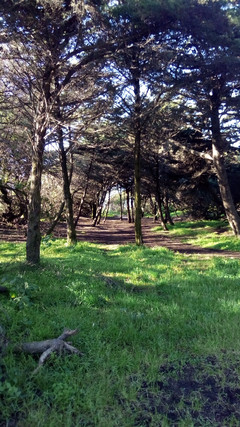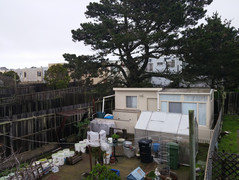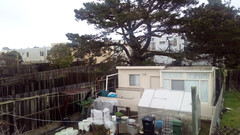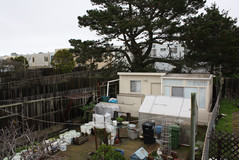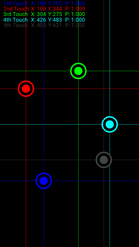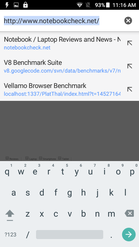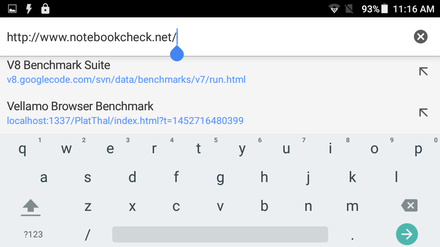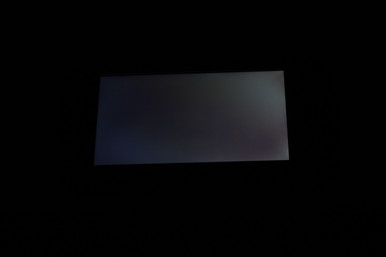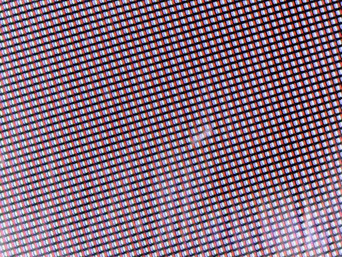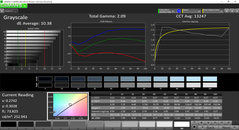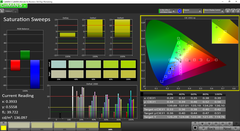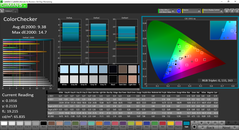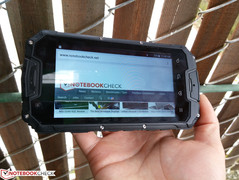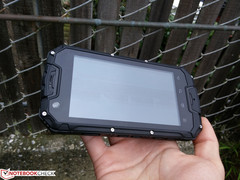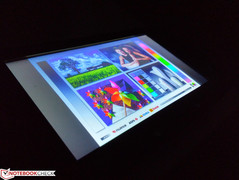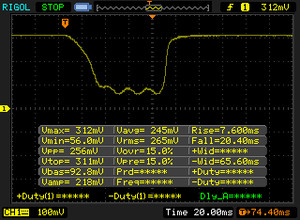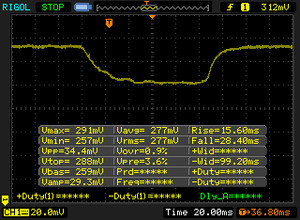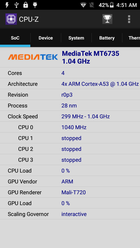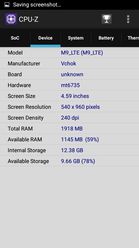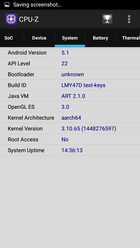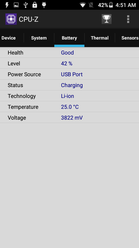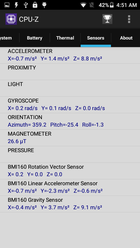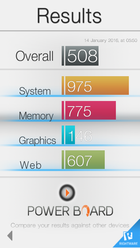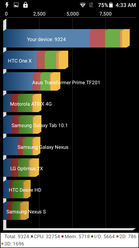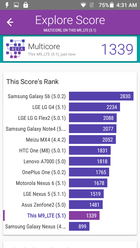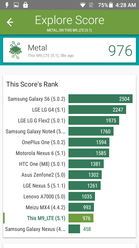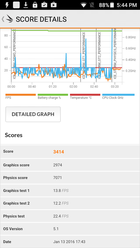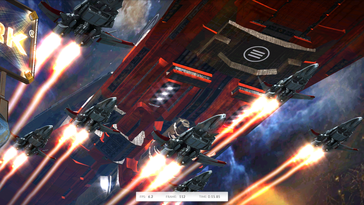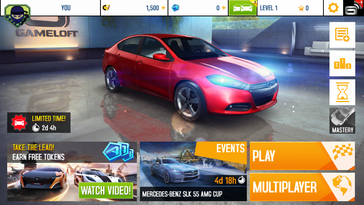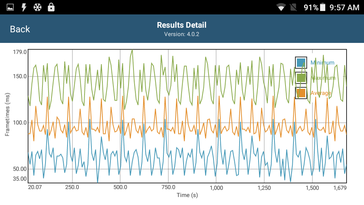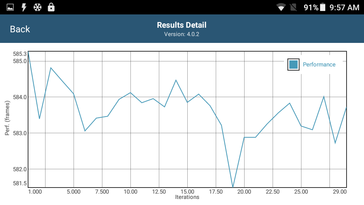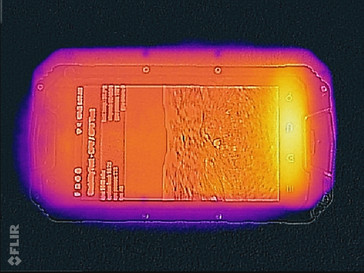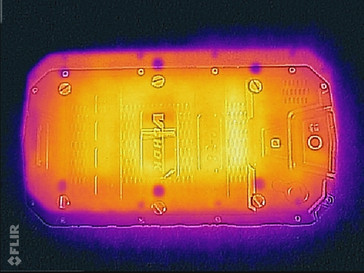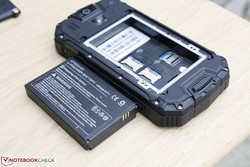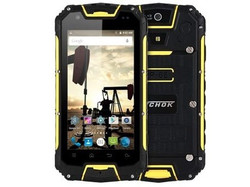Vchok M9 LTE Smartphone Review

Aside from the usual consumer and business class products, manufacturers will sometimes throw us a curve ball with rugged models designed for reliable use under extreme weather or terrain conditions. We've had a good handful of rugged models come our including the Kyocera Torque, Panasonic Toughpad FZ-E1, and even the rugged Dell Latitude 12.
A Chinese company called Vchok launched its M9-LTE smartphone late last year and is one of the most inexpensive rugged smartphones available at roughly $300 USD in a niche market where prices can easily surpass $1000 USD due to more stringent build quality standards. Packed with pure Android 5.1, 4G, and some unique features, we'll find out here if the M9-LTE is up to snuff.
Case
For a 4.5-inch smartphone, the size of the M9 is larger than 5-inch consumer models in length and width. It's also one of the thickest and heaviest at 25 mm and 350 grams, respectively, compared to the IP65/68-certified 5-inch Sony Xperia M4 Aqua (7.3 mm, 163 g) or rugged 4.5-inch Kyocera Torque (13.5 mm, 182 g). The airtight rubber casing is waterproof up to one meter, rated for drops on concrete of up to 1.2 to 1.5 meters, and is held together by 20 T5 torque screws on both the front and back. The device is completely rigid and with no creaking when attempting to twist it from any angle. Pressing down firmly on the screen will not produce any visible crystals as could happen on most consumer models.
Ports are protected by a rubber flap and the bottom of the device includes a loop for attaching strings or collars for easier carrying. The large battery itself is removable after taking out the thick cover behind it with a flat head screwdriver. Like the Kyocera Torque, the touchscreen will not respond to touch when completely submerged in water.
The M9 is relatively comfortable to hold and grip for one handed operation. The bulging battery cover on the back, however, will make it more difficult for smaller hands. Additionally, the buttons around the edges are not so easy to press as they are well recessed beneath the surface. Thus, simple actions like pressing the Power button or adjusting the volume will require more force than initially expected. The volume buttons are also much lower around the edge than what most users may be accustomed to since the SOS and LED Flashlight buttons take priority.
Connectivity
Physical ports include Micro-USB 2.0 and a 3.5 mm earphone jack. Charging is supported up to 1.2 V and the same port can be used to charge other devices as well since the M9 doubles as a power bank. A flap on the rear of the smartphone covers a threaded base used for attaching the included antennae for handheld transceiver (walkie-talkie) functionality. The feature works without the need for any major mobile network towers and is a wide appeal of the M9.
Otherwise, the healthy number of buttons around the left and right edges makes certain one-touch functions easier to use than simply navigating through the touchscreen. None are unfortunately customizeable; It would have been very useful to be able to pair user-defined applications to certain buttons.
Software
The M9 ships with an unfettered version of Android 5.1, so users are treated to no bloatware or excessive background applications that would be essentially useless for the target audience. Pre-installed applications are kept to a minimum as well with the FM Radio and Walkie Talkie applications being the most relevant. The radio, however, will still require a pair of compatible earphones to function.
We would have liked to see pre-installed applications for barometer, compass, GPS, light, and others to make the most of the wide array of sensors. Nonetheless, users can still install such third-party applications directly from the Play store without any issues.
Communication & GPS
The integrated GPS is quite accurate for a smartphone according to GPS Test. Accuracy was as high as 12 feet indoors and into the single digits when outside with no tower assistance. Nonetheless, it is still slightly less precise than a dedicated Garmin 500 GPS when making sharp turns.
Unique to the Vchok M9 is its walkie talkie feature for communication independent of cellular network towers. Users can set the receiver and transmitter frequencies with two Power settings (High, Low), two GBW settings (12.5K, 25.0K), standard SQ settings (1 through 8), and CTCSS encryption.
Telephone & Voice Quality
Two Mini SIM slots are available behind the battery alongside the MicroSD reader. 4G FDD-LTE is supported, though one must always make sure that its accepted bands (700/800/850/1700/1900/2100/2600 MHz) are compatible with the networks available in the region. Note that only the first SIM slot is capable of FDD-LTE/WCDMA while the second SIM slot is GSM/EDGE only. We attempted to insert a CDMA SIM card and while the M9 was able to recognize it, it was unable to connect to any towers to make or receive calls.
Call quality from both the earpiece and speakerphone is loud and clear with little static. The speakerphone is not any louder than on a standard consumer smartphone, however, and we would have liked it to be even louder to better serve outdoor conditions. According to our LG G3 caller on the other end, our voice sounded slightly softer and more muffled than usual. We experienced no dropped calls or other major issues whilst using the T-Mobile network during our tests.
Cameras & Multimedia
The rear 13 MP camera (4608 x 2592) produces muddy and darker images. Details are quite grainy even for a smartphone, such as around branches where fringing will be more noticeable. With that said, colors are not terrible and contrast is good enough where darkened objects under shadows can still be observed.
Video recording is available up to 1280 x 720 pixels at 15 FPS. Quality is very poor with muddy textures, blurry motion, and stuttering frame rates. We recommend shooting at lower resolution settings for higher frame rates if the video feature must be used.
1080p playback is otherwise smooth with no issues. We pre-loaded our test unit with Big Buck Bunny in 1080p as a .MOV file and noticed no hiccups for the entire duration of the video.
Input Devices
Touchscreen
The 5-point capacitive touchscreen is reliably responsive to light touches with no perceived issues around edges or corners. Typing with the standard virtual keyboard is fast and accurate without any significant latency. The haptic feedback could have been a bit stronger as the sheer size of the unit muffles the vibration. Larger hands will definitely find the typing experience more difficult due to the small screen size as well. Nonetheless, the precision and accuracy of the screen is not any different from brand name mainstream consumer smartphones.
Display
The 4.5-inch IPS screen provides a sub HD resolution of 540 x 960 pixels, far fewer than the Kyocera Torque and Panasonic Toughpad FZ-E1, though matching the similarly sized CAT S40. The screen itself is buried quite deep under the front glass, so users can see the thick protection that Vchok has provided for its display. On the flip side, colors and texts do not pop or appear as crisp as they do on mainstream consumer models. Text and icons will still be larger and blockier due to the relatively low PPI compared to most modern mainstream or even budget offerings.
The backlight for rugged devices are almost always much brighter than standard consumer models. The Kyocera Torque and Dell Rugged latitude, for example, are well over 600 nits each at their respective maximum settings.
The Vchok M9 disappoints in this category largely due to its dim backlight. At an average of about 237 nits, the display is dimmer than most budget consumer smartphones let alone the rugged devices that the M9 is competing against. Contrast is below average and the moderate backlight bleeding gives a Blue hue when displaying darkened content.
| |||||||||||||||||||||||||
Brightness Distribution: 90 %
Center on Battery: 243.2 cd/m²
Contrast: 417:1 (Black: 0.583 cd/m²)
ΔE ColorChecker Calman: 9.38 | ∀{0.5-29.43 Ø4.78}
ΔE Greyscale Calman: 10.38 | ∀{0.09-98 Ø5}
Gamma: 2.09
CCT: 13247 K
| VChok M9-LTE 4.5", 540x960 | Panasonic ToughPad FZ-E1 5", 1280x720 | CAT S40 4.7", 960x540 | Kyocera Torque 4.5", 1280x720 | Samsung Galaxy Xcover 3 4.5", 800x480 | Sony Xperia M4 Aqua 5", 1280x720 | |
|---|---|---|---|---|---|---|
| Response Times | ||||||
| Response Time Grey 50% / Grey 80% * (ms) | 44 ? | |||||
| Response Time Black / White * (ms) | 28 ? | |||||
| PWM Frequency (Hz) | ||||||
| Screen | 56% | 88% | 81% | 54% | 51% | |
| Brightness middle (cd/m²) | 243.2 | 494 103% | 607 150% | 723 197% | 452 86% | 547 125% |
| Brightness (cd/m²) | 238 | 481 102% | 579 143% | 722 203% | 436 83% | 535 125% |
| Brightness Distribution (%) | 90 | 95 6% | 90 0% | 87 -3% | 91 1% | 92 2% |
| Black Level * (cd/m²) | 0.583 | 0.54 7% | 0.5 14% | 0.65 -11% | 0.53 9% | 0.81 -39% |
| Contrast (:1) | 417 | 915 119% | 1214 191% | 1112 167% | 853 105% | 675 62% |
| Colorchecker dE 2000 * | 9.38 | 5.74 39% | 4.25 55% | 9.07 3% | 5.71 39% | 5.77 38% |
| Colorchecker dE 2000 max. * | 14.7 | |||||
| Greyscale dE 2000 * | 10.38 | 8.58 17% | 4.09 61% | 8.92 14% | 5.02 52% | 5.87 43% |
| Gamma | 2.09 105% | 2.24 98% | 2.61 84% | 1.65 133% | 2.15 102% | 2.14 103% |
| CCT | 13247 49% | 7030 92% | 6959 93% | 8090 80% | 7441 87% | 7784 84% |
| Color Space (Percent of AdobeRGB 1998) (%) | 71.2034 | 72.0875 | ||||
| Color Space (Percent of sRGB) (%) | 94.1292 | 96.5753 | ||||
| Total Average (Program / Settings) | 56% /
56% | 88% /
88% | 81% /
81% | 54% /
54% | 51% /
51% |
* ... smaller is better
Colors and grayscale are both poor on the M9. Color temperature is also much too cool, so there is again a Bluish tint to the entire screen when displaying any sort of content. As a direct result, Yellow colors appear quite Green and Violet colors have a hint of Purple.
Outdoor usability is poor due to the weak backlight and only made worse by the glossy screen. Glare and reflections are almost unavoidable when using the M9 outdoors. Comfortable use under direct sunlight is out of the question.
Viewing angles are slightly below average for an IPS screen. Colors and contrast will shift noticeably if viewing from too shallow of an angle. Fortunately, the device is still very much usable in both Landscape and Portrait modes.
Display Response Times
| ↔ Response Time Black to White | ||
|---|---|---|
| 28 ms ... rise ↗ and fall ↘ combined | ↗ 7.6 ms rise | |
| ↘ 20.4 ms fall | ||
| The screen shows relatively slow response rates in our tests and may be too slow for gamers. In comparison, all tested devices range from 0.1 (minimum) to 240 (maximum) ms. » 70 % of all devices are better. This means that the measured response time is worse than the average of all tested devices (20.2 ms). | ||
| ↔ Response Time 50% Grey to 80% Grey | ||
| 44 ms ... rise ↗ and fall ↘ combined | ↗ 15.6 ms rise | |
| ↘ 28.4 ms fall | ||
| The screen shows slow response rates in our tests and will be unsatisfactory for gamers. In comparison, all tested devices range from 0.165 (minimum) to 636 (maximum) ms. » 73 % of all devices are better. This means that the measured response time is worse than the average of all tested devices (31.6 ms). | ||
Screen Flickering / PWM (Pulse-Width Modulation)
| Screen flickering / PWM not detected | ||
In comparison: 53 % of all tested devices do not use PWM to dim the display. If PWM was detected, an average of 8111 (minimum: 5 - maximum: 343500) Hz was measured. | ||
Performance
The quad-core MediaTek MT6735 SoC is a budget chip for very inexpensive devices. Its raw performance sits in between the Snapdragon 210 and Snapdragon 410 according to LinPack. According to CPU-Z, the processor can run up to 1.04 GHz and a minimum of 300 MHz when the system is idling.
The smartphone is nonetheless responsive despite the slow processor due in part to the 2 GB of system RAM and low overhead from the lack of bloatware. Frame rates, however, tend to get clunky very quickly when switching between applications. Launching larger applications like games also take noticeably longer with the M9.
| PCMark for Android - Work performance score (sort by value) | |
| VChok M9-LTE | |
| Sony Xperia M4 Aqua | |
| Motorola Moto G 3. Gen 2015 XT1541 | |
| CAT S40 | |
| AnTuTu v6 - Total Score (sort by value) | |
| VChok M9-LTE | |
| Microsoft Lumia 950 XL | |
| Geekbench 3 | |
| 32 Bit Multi-Core Score (sort by value) | |
| Sony Xperia M4 Aqua | |
| Motorola Moto G 3. Gen 2015 XT1541 | |
| CAT S40 | |
| 32 Bit Single-Core Score (sort by value) | |
| Sony Xperia M4 Aqua | |
| Motorola Moto G 3. Gen 2015 XT1541 | |
| CAT S40 | |
| 64 Bit Multi-Core Score (sort by value) | |
| VChok M9-LTE | |
| Motorola Moto G 3. Gen 2015 XT1541 | |
| 64 Bit Single-Core Score (sort by value) | |
| VChok M9-LTE | |
| Motorola Moto G 3. Gen 2015 XT1541 | |
| Google V8 Ver. 7 - Google V8 Ver. 7 Score (sort by value) | |
| VChok M9-LTE | |
| Microsoft Lumia 950 XL | |
| Panasonic ToughPad FZ-E1 | |
| Sony Xperia M4 Aqua | |
| Motorola Moto G 3. Gen 2015 XT1541 | |
| CAT S40 | |
| Browsermark - 2.1 (sort by value) | |
| VChok M9-LTE | |
| Microsoft Lumia 950 XL | |
| Panasonic ToughPad FZ-E1 | |
| Motorola Moto G 3. Gen 2015 XT1541 | |
| Sunspider | |
| 1.0 Total Score (sort by value) | |
| VChok M9-LTE | |
| Microsoft Lumia 950 XL | |
| Panasonic ToughPad FZ-E1 | |
| Sony Xperia M4 Aqua | |
| Motorola Moto G 3. Gen 2015 XT1541 | |
| CAT S40 | |
| 0.9.1 Total Score (sort by value) | |
| VChok M9-LTE | |
| JetStream 1.1 - Total Score (sort by value) | |
| VChok M9-LTE | |
| Microsoft Lumia 950 XL | |
| Motorola Moto G 3. Gen 2015 XT1541 | |
| Mozilla Kraken 1.1 - Total (sort by value) | |
| VChok M9-LTE | |
| Microsoft Lumia 950 XL | |
| Panasonic ToughPad FZ-E1 | |
| Sony Xperia M4 Aqua | |
| Motorola Moto G 3. Gen 2015 XT1541 | |
| CAT S40 | |
| Octane V2 - Total Score (sort by value) | |
| VChok M9-LTE | |
| Microsoft Lumia 950 XL | |
| Panasonic ToughPad FZ-E1 | |
| Sony Xperia M4 Aqua | |
| Motorola Moto G 3. Gen 2015 XT1541 | |
| CAT S40 | |
| WebXPRT 2015 - Overall (sort by value) | |
| VChok M9-LTE | |
| Microsoft Lumia 950 XL | |
| Panasonic ToughPad FZ-E1 | |
| Sony Xperia M4 Aqua | |
| Motorola Moto G 3. Gen 2015 XT1541 | |
| CAT S40 | |
| Quadrant Standard Edition 2.0 - --- (sort by value) | |
| VChok M9-LTE | |
| Motorola Moto G 3. Gen 2015 XT1541 | |
| Motorola Moto G 3. Gen 2015 XT1541 | |
| Smartbench 2012 | |
| Gaming Index (sort by value) | |
| VChok M9-LTE | |
| Sony Xperia M4 Aqua | |
| Motorola Moto G 3. Gen 2015 XT1541 | |
| CAT S40 | |
| Productivity Index (sort by value) | |
| VChok M9-LTE | |
| Sony Xperia M4 Aqua | |
| Motorola Moto G 3. Gen 2015 XT1541 | |
| CAT S40 | |
| PassMark PerformanceTest Mobile V1 | |
| 3D Graphics Tests (sort by value) | |
| VChok M9-LTE | |
| Motorola Moto G 3. Gen 2015 XT1541 | |
| 2D Graphics Tests (sort by value) | |
| VChok M9-LTE | |
| Motorola Moto G 3. Gen 2015 XT1541 | |
| Memory Tests (sort by value) | |
| VChok M9-LTE | |
| Motorola Moto G 3. Gen 2015 XT1541 | |
| Disk Tests (sort by value) | |
| VChok M9-LTE | |
| Motorola Moto G 3. Gen 2015 XT1541 | |
| CPU Tests (sort by value) | |
| VChok M9-LTE | |
| Motorola Moto G 3. Gen 2015 XT1541 | |
| System (sort by value) | |
| VChok M9-LTE | |
| Motorola Moto G 3. Gen 2015 XT1541 | |
* ... smaller is better
Storage Devices
The internal 16 GB eMMC provides around 12 GB for end users when all is said and done. Performance according to AndroBench is very good with sequential write rates coming very close to the flagship HTC One M9. Sequential write speeds, however, are average in comparison and not all that different from the Xperia M4 Aqua and Kyocera Torque.
Users can utilize the MicroSD slot behind the battery for additional storage space if needed.
GPU Performance
The integrated dual-core ARM Mali-T720 MP2 GPU is a common graphics chip for low-end Chinese smartphones. The Bluboo Xfire and Valencia2 Y100 Pro, for example, carry the same GPU as our M9.
Gaming potential is limited on the Vchok smartphone. Titles like Asphalt 8 will stutter to the point of being unplayable while 3DMark can feel like a slideshow from start to finish. This isn't necessarily a big downside as smooth gaming performance is beyond the scope of the device. However, anyone hoping for strong GPU performance for other applications will be disappointed.
GFXBench shows no throttling of the system after almost 30 minutes of looping tests.
| 3DMark | |
| 1920x1080 Ice Storm Extreme Physics (sort by value) | |
| VChok M9-LTE | |
| Sony Xperia M4 Aqua | |
| CAT S40 | |
| Samsung Galaxy Xcover 3 | |
| 1920x1080 Ice Storm Extreme Graphics (sort by value) | |
| VChok M9-LTE | |
| Sony Xperia M4 Aqua | |
| CAT S40 | |
| Samsung Galaxy Xcover 3 | |
| 1920x1080 Ice Storm Extreme Score (sort by value) | |
| VChok M9-LTE | |
| Sony Xperia M4 Aqua | |
| CAT S40 | |
| Samsung Galaxy Xcover 3 | |
Emissions
Temperature
Surface temperatures are very low on the M9 even when under high loads for extended periods. This should be unsurprising since we have a slow MediaTek CPU underneath thick layers of rubber casing. At worst, we were able to record a maximum of just over 33 C on the front of the device. Oddly enough, the dedicated Android buttons warm up slightly more than the rest of the smartphone perhaps due to the positioning of the chipset inside.
In comparison, the thinner and more powerful Torque can reach surface temperatures of over 43 C while the Galaxy Xcover 3 can reach over 38 C under similar testing conditions.
(+) The maximum temperature on the upper side is 33.2 °C / 92 F, compared to the average of 35.2 °C / 95 F, ranging from 21.9 to 247 °C for the class Smartphone.
(+) The bottom heats up to a maximum of 30.8 °C / 87 F, compared to the average of 34 °C / 93 F
(+) In idle usage, the average temperature for the upper side is 24.3 °C / 76 F, compared to the device average of 32.9 °C / 91 F.
Speakers
The speaker on the back of the device is loud at maximum volume with no noticeable static. Quality, however, is narrow in range. It's acceptable for voice while being quite poor for music and media playback.
Battery Life
VChok offers 4700 mAh and 5100 mAh battery packs, both of which are very large and thicker than many smartphones. Our test model is equipped with the 4700 mAh pack that still easily doubles the capacity of even larger smartphones where the low 2000 mAh range is more common. Consequently, runtimes are very long at a minimum of 7 hours and 20 minutes under maximum display brightness and extreme stress with StabilityTest 2.5. Users can expect 15 hours of constant WiFi use or even more with more reserved settings and lower performance demands.
Charging will take quite some time from empty to full due to the high capacity of the battery pack. Expect to wait 4 to 6 hours for a complete charge on the M9.
| VChok M9-LTE 4700 mAh | CAT S40 3000 mAh | Samsung Galaxy Xcover 3 2200 mAh | Sony Xperia M4 Aqua 2400 mAh | Kyocera Torque 3100 mAh | Sony Xperia Z5 Compact 2700 mAh | |
|---|---|---|---|---|---|---|
| Battery runtime | -26% | -53% | -55% | -61% | -30% | |
| Reader / Idle (h) | 34.9 | 23.8 -32% | 16.7 -52% | 13.2 -62% | 37.5 7% | |
| WiFi v1.3 (h) | 15.1 | 10.2 -32% | 8.4 -44% | 7 -54% | 7.4 -51% | 7.3 -52% |
| Load (h) | 7.3 | 6.2 -15% | 2.8 -62% | 3.7 -49% | 2.2 -70% | 4 -45% |
Pros
Cons
Verdict
The Vchok M9 is inexpensive for its purpose as an all-terrain rugged smartphone. The cut corners are easy to see after spending a short amount of time with it as the display quality, backlight brightness, cameras, processing power, and GPU power are all well below average. If your intended workloads depend heavily on any of these factors, then it would be best to look elsewhere and at more costlier alternatives. The dim backlight is a big blow to the versatility of the phone as it is difficult to see onscreen content outdoors.
Otherwise, the rest of the M9 performs very well. Build quality is excellent from top to bottom with very long runtimes and an accurate GPS. Its handheld transceiver mode should be the most appealing feature to anyone considering the smartphone and is the real highlight of the device considering the $300 price point.
VChok M9-LTE
- 01/19/2016 v4.1 (old)
Allen Ngo




